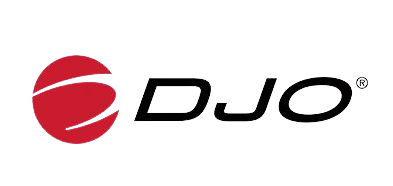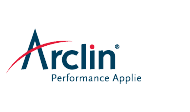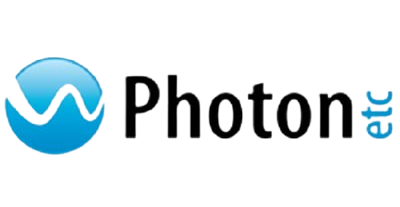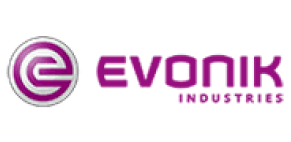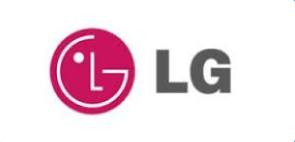The global Face recognition using edge computing market has registered US$ 947.5 million in 2020, and projected to reach at US$ 3,218.5 million by 2027, growing at a CAGR of 19.1% during 2021-2027. Face recognition using edge computing is nothing but an extension to the existing Face recognition application which was working on cloud servers. Cloud computing method only involved cloud servers and devices while edge computing involves use of edge devices that may be either IoT or smart devices which processes the data locally I.e., near the source of device which ultimately helps in faster response time, low bandwidth and improved performance.
Edge computing is nothing but the upgrade of cloud of cloud computing. It has an edge which is either a smart or IoT device is located near the source device in order to process the data faster and reduce the processing requirement at the cloud end. Here, Large number of data sets of individuals are stored in the application for recognizing/identifying the person, the application developed has to process large data sets to provide the output. However , the output provided has a considerable error rate also provide delayed response . Thus, in order to minimize the error rate, the artificial intelligence is been employed in the application. The use of artificial intelligence further increases the storage size and computing power so in order to reduce the error rate and have real time experience edge computing is been adopted. It not only processes the data fast but it can also efficiently leverage the artificial intelligence and 5g wireless technology which in turn, provides real-time results , reduces error rates and reduce the bandwidth.
Going further, software at times can give false alarms and may accuse a innocent person or may not identify the suspected person as the cameras may fail to capture a human face at specific angle . These types of mistakes can create a severe impact on the end-user and may harm the organization reputation.
However, the use of Face recognition software using edge computing does not have any drawbacks expect it is costlier than its cloud counterpart. Apart from this the use of the Face recognition can be misused by using it for spying purpose. If the application is compromised then the there is a huge threat to data privacy of every individual whose records are maintained in that systems . Hence, it is very important that the application must follow secure coding guidelines and may take proper cybersecurity measures to keep the systems safe from hacks.
Based on device type, the global market can be segmented into integrated and standalone. The integrated segment is anticipated to be the dominant segment throughout the forecast period. Integrated edge devices perform Face recognition quickly with extreme precision eliminating the delay from large file transmission or from cloud processing. There is no internet required to establish a cloud or network connection for Face recognition process if the data is not stored on the edge device. In that case, only a small encoded format is transmitted to validate with the templates that are hosted on a remote server. This leads to a quick and secure operation completed within milliseconds. Moreover, the lower cost and improved scalability and flexibility is expected to surge the demand for integrated segment among end-users.
By application, the global market has been categorized into Access Control, Advertising, Attendance Tracking & Monitoring, eLearning, Emotion Recognition, Law Enforcement, Payment, and Robotics. The law enforcement segment is expected to be the dominant segment throughout the forecast period. Law enforcement is one of the major applications for Face recognition using edge computing. It is mostly adopted by most developed countries to keep their citizen from several threats such as terrorism or criminal activities.
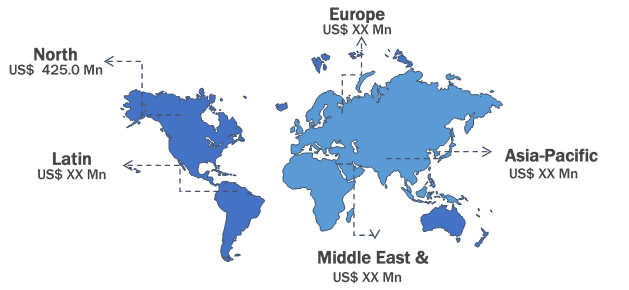
North America is the largest market for the Face recognition using edge computing. The major end-user of this application is law enforcement departments. The U.S has the highest market share with North America and despite the privacy issue concerns and some of the false alarms the law enforcement department are the biggest end-user of this application. Several Tech giants have collaborated with U.S states to provide Face recognition applications. Corporate Offices is the second largest industry .The use of Face recognition is used here to secure its premises and restricted areas with these applications.
Some of the prominent companies involved in global Face recognition using edge computing market includes Alphabet, Inc., Apple Inc., Arm Ltd., NXP Semiconductors, MediaTek Inc., Cadence Design Systems, Inc. , IDEMIA, Micron Technology, Inc., Xilinx, Inc., Samsung Electronics, Huawei Technologies Co., Ltd., Microsoft Corporation, Qualcomm Technologies, Inc., Amazon.com Inc, and Intel Corporation.
What is the expected CAGR in terms of revenue for global Face recognition using edge computing market during 2021-2027?
The global Face recognition using edge computing market is projected to witness a CAGR of 19.1% during 2021-2027.
What was the value of North America market in 2020?
The market in North America was valued US$ 425.0 Million in 2020
What are the key factors driving the market growth?
Requirement of real-time results , reduce error rate and reduce bandwidth to foster the adoption of Face recognition using edge computing market
What are the top players in global Face recognition using edge computing market?
Some of the leading companies involved in global Face recognition using edge computing market includes Alphabet, Inc., Apple Inc., Arm Ltd., NXP Semiconductors, MediaTek Inc., Cadence Design Systems, Inc. , IDEMIA, Micron Technology, Inc., Xilinx, Inc., Samsung Electronics, Huawei Technologies Co., Ltd., Microsoft Corporation, Qualcomm Technologies, Inc., Amazon.com Inc, and Intel Corporation.
1. Preface
1.1. Objectives of the Study
1.2. Market Segmentation & Coverage
1.3. Years Considered for the Study
1.4. Currency & Pricing
1.5. Language
1.6. Limitations
1.7. Assumptions
1.8. Stakeholders
2. Research Methodology
2.1. Define: Research Objective
2.2. Determine: Research Design
2.3. Prepare: Research Instrument
2.4. Collect: Data Source
2.5. Analyze: Data Interpretation
2.6. Formulate: Data Verification
2.7. Publish: Research Report
2.8. Repeat: Report Update
3. Executive Summary
3.1. Introduction
3.2. Market Outlook
3.3. Component Outlook
3.4. Device Type Outlook
3.5. Application Outlook
3.6. Geography Outlook
3.7. Competitor Outlook
4. Market Overview
5. Market Insights
5.1. Market Dynamics
5.1.1. Drivers
5.1.1.1. Increasing adoption of facial recognition using edge computing
5.1.1.2. Growing adoption to resolve latency-specific issues in face recognition applications
5.1.1.3. Succoring real-time and intelligent applications
5.1.2. Restraints
5.1.2.1. Issues over security and user mobility
5.1.3. Opportunities
5.1.3.1. Seamless and personalized experience to improve business processes
5.1.3.2. Increasing integration with AI drones and video surveillance
5.1.4. Challenges
5.1.4.1. Technical and computational issues with embedded device such as interoperability, accessibility, and configuration
5.2. Cumulative Impact of COVID-19
5.3. Porters Five Forces Analysis
5.3.1. Threat of New Entrants
5.3.2. Threat of Substitutes
5.3.3. Bargaining Power of Customers
5.3.4. Bargaining Power of Suppliers
5.3.5. Industry Rivalry
6. Face Recognition using Edge Computing Market, by Device Type
6.1. Introduction
6.2. Integrated
6.3. Standalone
7. Face Recognition using Edge Computing Market, by Component
7.1. Introduction
7.2. Hardware
7.3. Services
7.4. Software
8. Face Recognition using Edge Computing Market, by Application
8.1. Introduction
8.2. Access Control
8.3. Advertising
8.4. Attendance Tracking & Monitoring
8.5. eLearning
8.6. Emotion Recognition
8.7. Law Enforcement
8.8. Payment
8.9. Robotics
9. Americas Face Recognition using Edge Computing Market
9.1. Introduction
9.2. Argentina
9.3. Brazil
9.4. Canada
9.5. Mexico
9.6. United States
9.6.1. California
9.6.2. Florida
9.6.3. Illinois
9.6.4. New York
9.6.5. Ohio
9.6.6. Pennsylvania
9.6.7. Texas
10. Asia-Pacific Face Recognition using Edge Computing Market
10.1. Introduction
10.2. China
10.3. India
10.4. Indonesia
10.5. Japan
10.6. Malaysia
10.7. Philippines
10.8. South Korea
10.9. Thailand
11. Europe, Middle East & Africa Face Recognition using Edge Computing Market
11.1. Introduction
11.2. France
11.3. Germany
11.4. Italy
11.5. Netherlands
11.6. Qatar
11.7. Russia
11.8. Saudi Arabia
11.9. South Africa
11.10. Spain
11.11. United Arab Emirates
11.12. United Kingdom
12. Competitive Landscape
12.1. FPNV Positioning Matrix
12.1.1. Quadrants
12.1.2. Business Strategy
12.1.3. Product Satisfaction
12.2. Market Ranking Analysis
12.3. Market Share Analysis
12.4. Competitive Scenario
12.4.1. Merger & Acquisition
12.4.2. Agreement, Collaboration, & Partnership
12.4.3. New Product Launch & Enhancement
12.4.4. Investment & Funding
12.4.5. Award, Recognition, & Expansion
13. Company Usability Profiles
13.1. Alphabet, Inc.
13.2. Apple, Inc.
13.3. Applied Brain Research
13.4. Arm Holdings
13.5. Cadence Design Systems, Inc.
13.6. Horizon Robotics
13.7. Huawei Technologies Co., Ltd.
13.8. IDEMIA
13.9. Mediatek, Inc.
13.10. Micron Technology
13.11. Microsoft Corporation
13.12. NVIDIA Corporation
13.13. Qualcomm Incorporated
13.14. Samsung Electronics
13.15. Xilinx, Inc.
14. Appendix
14.1. Discussion Guide
14.2. License & Pricing
14.3. Contact Details
To ensure high-level data integrity, accurate analysis, and impeccable forecasts
For complete satisfaction
On-demand customization of scope of the report to exactly meet your needs
Targeted market view to provide pertinent information and save time of readers
A faster and efficient way to cater to the needs with continuous iteration


Focus on Data Accuracy & Reliability

75+ Clients in Fortune 500

All your transactions are secured end-to-end, ensuring a satisfactory purchase

Ensure the best and affordable pricing
